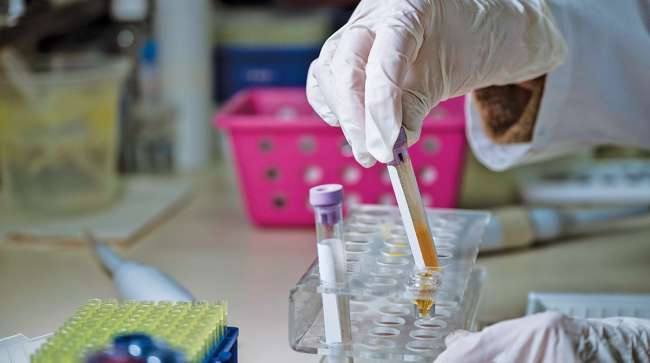Senior Reporter
Positive Drug Tests for Truck Drivers Down, FMCSA Says

[Stay on top of transportation news: Get TTNews in your inbox.]
The number of positive drug tests for marijuana and nearly all other substances identified among truck drivers declined in calendar year 2023 compared with 2022, according to year-end numbers recorded in the Federal Motor Carrier Safety Administration’s Drug & Alcohol Clearinghouse.
The number of annually recorded marijuana positive tests and 13 other positive-tested substances decreased to 61,443 in 2023 from 68,639 in 2022 — a more than 10% decline.
But the annual drug testing numbers were not all encouraging.
“We’ve observed that even though the number of positive drug tests dropped for the first time in relation to the previous calendar year, the number of overall drug violations reported to the Clearinghouse continued to increase [68,229 drug violations in 2023 compared with 67,775 in 2022],” FMCSA said in a statement to Transport Topics.
By the Numbers
Positive tests among truck drivers for marijuana and 13 other substance fell year-over-year in 2023. Some examples:
- Marijuana — 2023: 37,657. 2022: 40,916.
- Cocaine — 2023: 10,326. 2022: 10,953.
- Methamphetamine — 2023: 4,515. 2022: 5,569
- Amphetamine — 2023: 4,222. 2022: 5,349.
Source: Federal Motor Carrier Safety Administration Drug & Alcohol Clearinghouse
The agency added, “The overall rise in drug violations in 2023, even though there are fewer positive drug tests, is attributed to nearly a 40% increase in reported drug test refusals — 9,214 in 2022 versus 12,804 in 2023. Drug test refusals include employer reported refusals like failing to show up for a random test, or leaving a test collection facility after a test has begun but before it’s complete.”
Drug test refusals also include medical review officer-reported violations when the submitted specimens have been altered or substituted, or that is deemed not human urine, FMCSA noted.
What hasn’t seemed to change much is the large number of drivers who have tested positive in past years but haven’t registered for a return-to-duty program that would allow them to get back in the cab.
Of the 226,598 CDL/CLP drivers who tested positive for at least one drug since the Clearinghouse opened in January 2020, 158,330 remain in “prohibited driving status.” A total of 68,268 drivers with at least one violation are currently in “not-prohibited status,” and 15,699 drivers have successfully completed follow-up testing.
Could the new numbers mean that drivers are becoming more aware of the long-term consequences of a positive marijuana test? Although many states are legalizing the drug, CDL holders are forbidden from using it.

Horvath
“While there could be a few unknown variables that are impacting the decline, I’m cautiously optimistic that the decline in the number of positives is simply because the Clearinghouse is working,” said Dan Horvath, senior vice president of regulatory affairs and safety policy for American Trucking Associations. “We are now more than four years into having an active Clearinghouse system, and I’m hopeful that the message is out there that illegal drug use will be detected.”
Horvath added, “Motor carriers have increased the education they provide to drivers to ensure they are aware of the consequences of testing positive. Now, we must ensure that oral fluid testing labs are approved so that carriers can begin using that testing method if they choose.
“ATA has also reiterated the need to correct and finalize the long-overdue hair testing guidelines that have been in Office of Management and Budget review for over a year now.”

Murray
Dan Murray, senior vice president for the American Transportation Research Institute, thinks three variables likely account for the changes in some of the positive tests.
“2023 was a really bad year for the trucking industry,” Murray said. “We were technically in a recession. So I think the number of people entering the industry was considerably smaller than the previous years.”
Murray also notes that there’s a percentage of truck drivers who are proactively leaving the industry before they find themselves in a job where they’re being drug tested.
“So I think some people are proactively thinking ‘Well, before I get caught, I’m outta here,’ ” he said.
Murray added he believes that there also is a percentage of drivers who have seen the light.
“They say, ‘It’s not worth it to push my luck. If I use, I’m going to get tested. If I get tested I’m going to lose my job. So it’s time to clean up my act.’ ”
Want more news? Listen to today's daily briefing below or go here for more info:




